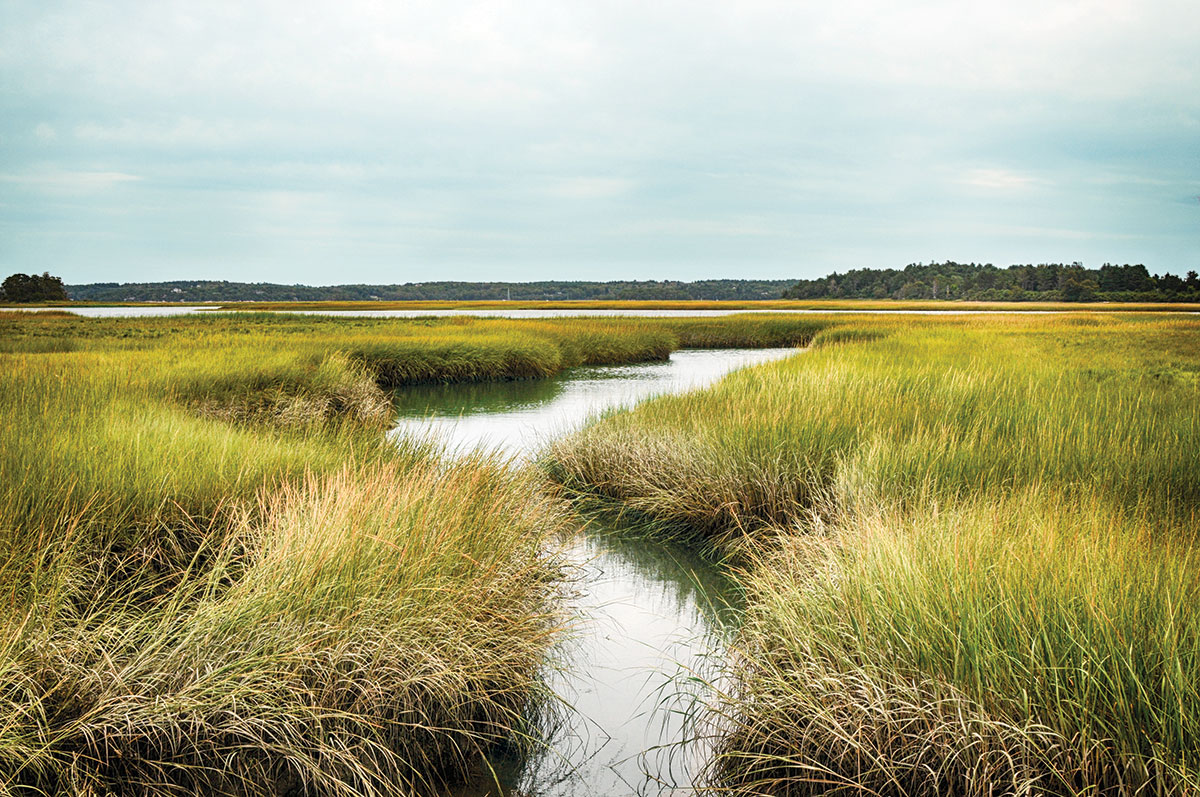More than 600 North Shore buildings could experience daily tidal flooding by 2030, and more than 7,000 will be in the same category if a 100-year-storm event occurs, according to a new State of the Coast report released by The Trustees of Reservations. By 2070, those numbers increase to 3,100 and 12,000, respectively.
“North Shore communities, leaders, and coastal landowners can no longer postpone climate-facing emergency planning and decision making,” says Tom O’Shea, Trustees Director of Coast and Natural Resources. “Time is running out to take actions that will protect our coast, and the latest data featured in our report shows that many of these impacts will intensify in the next decade, and accelerate after 2050, so now is the time to pursue resilience through sustainable and adaptive approaches.”
The 40-page State of the Coast report released August 20 highlights the climate change-driven impacts of sea level rise and storm flooding faced by 13 North Shore Coastal Zone Communities, including impacts to beaches, salt marsh, developed coastal areas, armored shorelines, and habitats, as well as future adaptation opportunities and solutions. The towns detailed in the report are: Salisbury, Newburyport, Newbury, Rowley, Ipswich, Essex, Rockport, Gloucester, Manchester-by-the-sea, Beverly, Salem, Marblehead, and Swampscott.

“The State of the Coast Report provides an in-depth look at the unique challenges North Shore communities are facing as a result of climate change, demonstrating the importance of the Baker-Polito Administration’s ongoing work to significantly reduce greenhouse gas emissions and partner with communities to build climate resilience,” said Energy and Environmental Affairs Secretary Kathleen Theoharides. “The Trustees’ report also highlights informative data and resources, many developed by state agencies, which communities can use to better understand future climate threats.”
The Trustees compiled this report using publicly available data and evidenced-based reports from numerous organizations and agencies as well as independent research. Impact to buildings and roads from storm flooding were determined using results from the MCFRM (Massachusetts Coast Flood Risk Model) developed by Woods Hole Group (WHG), providing an in-depth look at town-specific impacts, including maps of near-term daily tidal and storm flooding. Projected changes to vulnerable salt marsh and coastal habitat were derived from SLAMM (Sea Level Affecting Marshes Model) results developed by WHG, for the Massachusetts Office of Coastal Zone Management.
“Climate change is of increasing concern to North Shore communities, and beyond, and it’s critical that municipalities have strong research and data to properly evaluate and mitigate this risk and plan for the future,” said Peter Coffin, Chair of The Trustees of Reservations and President of Breckinridge Capital Advisors, which sponsored the report.
Some of the key findings in this report include:
· By 2070, 400 acres of the Great Marsh could be completely lost
· $88.3M is the estimated cost to repair the region’s aging seawalls and coastal armored structures
· Only 25% of our coastal habitat is permanently protected
· Crane Beach has lost the equivalent of 84 football fields of sand since the 1950s
“The Trustees’ report is a comprehensive and thoughtful assessment of a number of the risks to our natural and built environments backed by real-world data and scientific analysis,” said Senate Minority Leader Bruce Tarr (R- Gloucester). “This document buttresses the ongoing work of many organizations, including the North East Coastal Coalition and the Merrimack River Beach Alliance, and points to the need for future such collaborative efforts to further momentum toward knowledge and policy development so that we act proactively as good stewards of our coast for future generations.”
From a regional perspective, the report finds important differences in the North Shore’s northern and southern tiers that may require targeted approaches. Large extents of low-lying coastal marshes and beaches, nearby roads and development are at-risk of erosion, habitat loss, or impacts from daily tidal or storm flooding.
Less developed areas in the Upper North Shore may experience greater impacts to natural areas in total but may be more resilient than the smaller beaches and marshes south of Gloucester. Although developed areas in the southern region are often higher in elevation, there are areas of significant flooding impact to residential and urban waterfront areas. Structures like seawalls and nearby shoreline will be increasingly challenged by storm flooding impacts.
Coastal landowners, town officials, and other stakeholders can use the report’s findings to identify areas of critical concern and prioritize investments in mitigation efforts and resilience projects. Additionally, “project spotlights” in the report highlight resiliency work already underway in these communities, providing examples for others to follow.
The State of the Coast report will be published annually over the next four years, with a focus on the Cape & Islands being released in Summer 2021, followed by the South Shore, and finally, the South Coast. The full PDF of the report can be downloaded on thetrustees.org/coast, where interactive mapping and detailed data is also available.
“In 1891, our founder recognized the importance of the coastline for future generations and acted to protect it from the major threat of its day—rapid development, and privatization,” says Barbara Erickson, Trustees President & CEO. “One of the first acts of The Trustees was to commission the Province Lands Report, a natural history survey and management recommendations for the outer Cape. That report laid the foundation for what was to become the National Seashore. Now we stand at an inflection point, much as our founders did. It is clear that change is upon us, that we must act now to ensure that we secure the coast for future generations, and that doing so will take leadership, collaboration, and innovation.”

